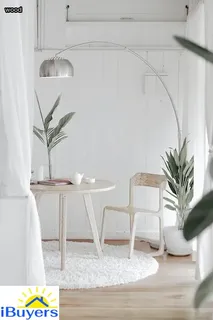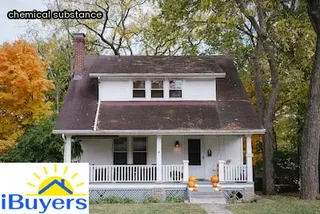When it comes to termite treatment, there are many different methods available. These can range from chemical treatments to physical barriers and natural remedies.
Chemical treatments involve the application of insecticides or fumigants which target the termites directly, while physical barriers create a barrier around your home that prevents the creatures from entering. Natural remedies can include the use of boric acid, diatomaceous earth, or insect traps to help eliminate an infestation.
Each option has its own advantages and disadvantages, so it is important to understand these before making a decision on which method is best for your situation. Before beginning any form of treatment, always consult with a professional in order to make sure you are doing everything correctly and safely.

Termites can cause significant damage to a home, leading to expensive repairs and renovations. That's why it's important to have a plan of action when it comes to treating your home for termites.
One of the most effective methods of termite treatment is the use of termiticides, which are chemicals that kill or repel termites. Termiticides come in liquid, foam, and dust formulations, making them easy to apply in any variety of ways.
Not only do these products offer fast-acting protection against termites, but they also provide long-term protection by creating an invisible barrier around your home that keeps future infestations at bay. Additionally, some termiticides are designed to target specific species of termites so you can be sure you're getting the best possible defense against a particular type of pest.
In addition to protecting your home from damage caused by termite infestations, using termiticides also helps protect your family from potential health risks associated with these pests.
Before beginning fumigant treatment for termites, it is important to properly prepare your home for the process. Start by sealing off all areas of the home that are not connected to the infested area.
This includes ventilation shafts, windows, doors and any other openings. Next, remove all food items from the area and cover furniture with plastic sheeting.
Vacuum up any termite droppings or wood shavings from around baseboards and walls and throw away in a sealed container outside of the home. Be sure to inspect furniture for signs of termite infestation and if found, move to another room or cover with plastic sheeting that is sealed tightly.
Lastly, make sure to turn off pilot lights on gas appliances in the affected room before beginning fumigant treatment. Taking these steps will help ensure that your home is properly prepared for a successful termite treatment.

When treating a home for termites, safety must always be a priority. To ensure that everyone involved in the treatment is safe, it's important to wear protective clothing such as long sleeves and gloves when handling any chemicals or extermination equipment.
It's also important to ventilate the area by opening windows and using fans to circulate air throughout the home. If you are applying chemical treatments yourself, make sure you read all instructions carefully and follow the manufacturer's guidelines closely.
Additionally, it's important not to disturb treated areas until they have been given time to dry completely. Finally, if you choose to hire a professional exterminator, be sure that they are licensed and insured with experience in treating termites in your particular region.
Following these steps will help keep everyone safe during the treatment process.
When it comes to arranging temporary accommodations for termite treatment in your home, there are some best practices that should be followed. It is important to prepare for the process ahead of time and make sure the necessary steps have been taken before the technicians arrive.
This includes making sure to remove any furniture, curtains, or other materials that may be in the way of treatment. All pets should also be removed from the area during treatment and kept away until it has been completed.
If possible, it is advisable to arrange alternate living arrangements outside of your home while termite treatments are being conducted as a precautionary measure. Make sure all windows and doors remain closed during this time as well.
Taking these precautions will ensure a safe and efficient process when dealing with termite treatment in your home.

When it comes to termite treatment for your home, removing and protecting food items is an important step. It's essential to remember that termites are attracted to food sources, so any food items left out may invite these pests into your home.
To prevent this from happening, make sure all food items are stored in sealed containers or kept in the refrigerator. Additionally, make sure to clean up any spills or crumbs as soon as possible.
Regularly check cupboards, pantries and other areas for signs of infestation and take action as soon as you spot an issue. Furthermore, if you have pets, remember to keep their food bowl off the floor and away from walls where termites may be lurking.
Taking these simple precautions will help ensure that your home remains safe and free of unwelcome guests.
Before beginning any termite treatment, it's important to know how to effectively address utilities properly in order to ensure safety. Homeowners should be sure to turn off the electrical power and shut off the gas supply lines before attempting any kind of termite treatment.
Additionally, homeowners may need to contact their local utility company if there are any visible lines requiring relocation or removal before continuing with the treatment process. Lastly, all water sources should also be disconnected before beginning treatments and reconnected afterward.
Knowing how to properly handle utilities is a key part of ensuring a successful termite treatment for your home.

The first step to knowing how to treat termites and other pests in your home is being able to identify them. There are many common pests like termites, fleas, bed bugs, cockroaches, ants, and rodents that can all cause damage in your home if not taken care of properly.
Termites are small insects that feed on wood and cellulose materials, while fleas are wingless insects that live on the blood of animals. Bed bugs are tiny, flat-bodied parasites that feed on warm-blooded animals such as humans.
Cockroaches are typically nocturnal insects that have an oily outer coating and six legs. Ants are usually small black or red insects with six legs and a segmented body shape.
Rodents come in many sizes and shapes including mice, rats, squirrels, and gophers who can cause significant damage to your property if not treated right away. Knowing what type of pest you’re dealing with is important for successful treatment so make sure you thoroughly inspect your home for any signs of these common pests before beginning any treatments.
Termites can be a homeowner's worst nightmare, damaging the structure of your home and causing significant financial losses. To protect your home from termites, it is important to understand what attracts them and why they are drawn to certain properties.
The most common factors that attract termites include the presence of wood and moisture, as well as access to soil for food sources. Wood is a primary source of nourishment for termites, so any wood-based materials such as lumber or wooden furniture should be kept away from the exterior walls of your home.
Moisture also plays an important role in attracting termites, so it is essential to keep your property dry by fixing leaky pipes or faucets, cleaning gutters regularly, and using dehumidifiers if needed. Additionally, having direct contact with soil provides termites with a place to burrow and seek out food sources.
To minimize this risk, homeowners should make sure their foundation is sealed off from any potential contact with soil. By understanding the key factors that attract termites to homes and taking proactive steps to prevent them from entering your property, you can safeguard your home from damage caused by these destructive pests.

When it comes to termite treatment, homeowners have a range of options to choose from. Depending on the severity of the infestation, a particular method may be recommended by a professional pest control specialist.
One of the most common treatments is fumigation, which involves pumping a toxic gas into an enclosed area in order to kill off any termites present. Another option is spot treatments, where insecticides are sprayed directly onto the affected area.
For more localized infestations, bait systems are also available that can be placed around the perimeter of your home and will attract termites and eventually eradicate them. Finally, physical barriers like treated lumber or metal shields can be used to prevent further infestation.
To determine which treatment is best for your situation, it’s important to consult with an experienced exterminator who can assess your situation and provide you with tailored advice.
Termite prevention is one of the most important steps you can take to protect your home from damage and costly repairs. Strategically placed barriers can help to stop termites from entering your home, while also reducing the likelihood of an infestation.
One of the best strategies for preventing termites in your home is to inspect it regularly and look out for warning signs such as mud tunnels, wood damage and swarming activity. Make sure to keep the soil around the foundation dry by using gutters or other drainage systems, as damp soil will attract termites.
Additionally, remove any wood debris and sources of moisture near your home as this can be an attractive breeding ground for termites. Finally, consider treating vulnerable areas of your home with a liquid insecticide or contact a professional pest control service who can treat your entire property with specialised products designed specifically for termite protection.
By following these prevention tips you can ensure that your home remains free from destructive termites.

Termites can cause serious damage to a home if left unchecked, so it’s important to know the best methods for getting rid of them quickly. One of the most common and effective methods is to use bait systems, which involve placing stations around the perimeter of the affected area that contain a material that termites are attracted to.
The material contains an insecticide that kills the termites when they come into contact with it. Another option is to inject liquid insecticides into the soil around your home, which can penetrate deep into hard-to-reach areas and kill any colonies there.
Additionally, fumigation is an option for larger infestations, where gas is released throughout the house in order to kill all of the termites inside. Whichever method you decide to use, it’s important to follow all instructions carefully and monitor the situation regularly in order to make sure that the treatment has been successful.
When identifying the right termite treatment for your home, understanding the different types of termites is essential. Subterranean termites are among the most common and live in underground colonies, while drywood termites can be found in drier, warmer climates and nest inside wood.
Formosan termites are an invasive species that has spread throughout much of the United States and can cause major structural damage to homes due to their aggressive behavior. Dampwood termites prefer moist wood but can also be found in dry wood, making them another potential threat to structures.
No matter which type of termite infestation you have, it's important to take decisive action as soon as possible to prevent further damage. Different treatments will vary depending on the type of infestation and should always be handled by a professional pest control service.

Accurately diagnosing a termite infestation in your home is crucial for effective treatment. There are several signs that indicate an infestation such as the presence of mud tubes, damaged wood, swarming termites, and droppings.
Mud tubes are the most common sign of a termite infestation and appear as pencil-sized tubes made from soil and saliva on walls, foundations, or other areas where termites can gain access to wood. Damaged wood will also be visible from the interior of your home with hollowed out wood, sagging floors and ceilings, or dark spots.
Swarming termites are typically seen during spring time and present themselves as winged insects that take flight when disturbed. Lastly, small piles of droppings called frass may also be found near an infested area.
Knowing these signs can help you quickly diagnose a termite infestation in your home and begin treatment immediately to minimize damage to your property.
When it comes to protecting your home from termites, the best strategy is to take long-term preventative measures. To start, make sure that all wood in and around your home is treated for termites.
This can be done by having a professional come and inspect your property for any potential problems before treating any areas with products designed to repel or kill termites. Additionally, it’s important to keep firewood off of the ground and away from the structure of your home as this can attract termites.
You should also inspect vents, window frames, and other parts of the exterior of your home for signs of infestation. If you do find evidence of a termite infestation, contact a professional immediately as they will be able to advise you on the best treatment options for your specific situation.
Finally, avoid using mulch near the foundation of your house as this can provide an ideal environment for termites to thrive in. By taking these steps and following an ultimate guide to termite treatment for your home, you can help ensure that your house remains safe from pests like termites in the long run.

Treating a house for termites is not something to take lightly. It requires an understanding of the pests and their habits, as well as proper application of the necessary treatments.
The most common type of treatment is liquid termiticide, which is applied with a spray gun or back-pack sprayer around the entire perimeter of your home. This creates a barrier that keeps termites away from your structure.
Additionally, baiting systems can be used to target active infestations; these typically involve inserting bait stations into the ground and monitoring them for activity. Physical barriers such as metal flashing, foam insulation, and foam board can also be used to keep termites away from your home’s foundation.
Finally, some people use natural methods such as orange oil and borates to deter termite activity in their homes. No matter what method you choose, it's important that you understand how to properly apply it in order to get the best results possible.
When it comes to termite treatment for your home, having a professional exterminator come in and address the issue is one of the most efficient ways to get rid of the pesky insects. There are several types of treatments available depending on the severity of the infestation and how long they have been present.
Fumigation is usually the most expensive but also considered to be the most effective since it penetrates all areas of a home including walls, ceilings, and even hard to reach places. Baiting systems are also an option, with them being placed around the perimeter of a building in order to kill off any termites that attempt to enter.
Spraying chemical insecticides is another popular method used by exterminators as it can penetrate cracks and crevices where termites may be hiding. Finally, there are heat treatments which involve using high temperatures or steam in order to eradicate any termites present in a house.
No matter what type of treatment you choose, make sure it fits your budget and needs so that you can get back to living pest free!.
Yes, you can treat for termites at home by yourself. In fact, with the right preparation and knowledge it's not as difficult as it may seem.
This guide will provide you with the ultimate step-by-step instructions on how to treat termites in your home. First, inspect your home for signs of termite activity such as mud tubes, damaged wood or droppings.
If you detect any of these signs, it's time to take action. Next, identify the type of termite infesting your home so that you can select the appropriate treatment option.
Depending on the severity of the infestation, you may want to use a liquid termiticide or bait system to get rid of them. Finally, take preventive steps such as eliminating moisture sources and using chemical barriers to keep future infestations from occurring.
With this comprehensive guide to termite treatment for your home, you'll be able to safely and effectively eliminate these destructive pests from your living space!.

Yes, you can treat wood for termites yourself with the right knowledge and tools. While it is possible to do a DIY termite treatment at home, it is always best to consult a professional exterminator first.
DIY treatments are usually less effective than professionally administered treatments and should only be used as a last resort. To properly treat your home for termites, you should start by identifying the type of termite infestation in your home and then selecting the best treatment option for that particular species.
Some of the most common methods for treating wood for termites include chemical treatments, baiting systems, heat treatments, fumigation and freezing treatments. Each method works differently, so it is important to determine which one would be most effective in your situation before attempting any DIY termite treatment.
Additionally, when treating wood for termites yourself it is important to keep safety in mind. Wear protective gear such as gloves and masks while handling chemicals or performing other DIY treatments.
Following proper safety precautions will help ensure that your DIY project is safe and successful.
The most effective treatment for termites is to take preventative measures before an infestation occurs. It is important to inspect your home regularly for signs of termite activity, such as wood damage or mud tubes.
If you do find evidence of a termite infestation, then the best course of action is to contact a professional pest control company that specializes in termite treatments. Professional exterminators will be able to assess the severity of the infestation and develop a comprehensive plan that includes preventive treatments and baiting systems.
Additionally, they may recommend physical barriers such as metal flashing or soil treatments to reduce the chances of future infestations. Following these steps can significantly reduce the chances of your home becoming infected by termites and minimize the time and cost associated with treating them.
By utilizing our ultimate guide to termite treatment for your home, you can ensure that you are taking all necessary steps to protect your property from this destructive pest.